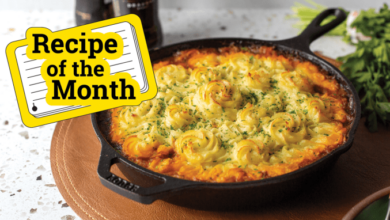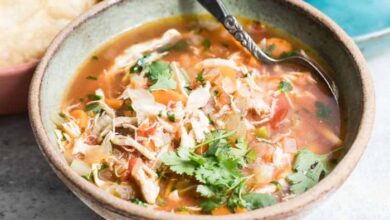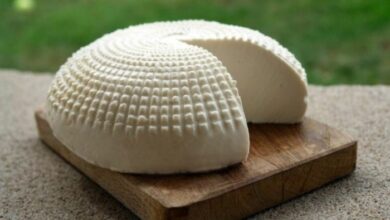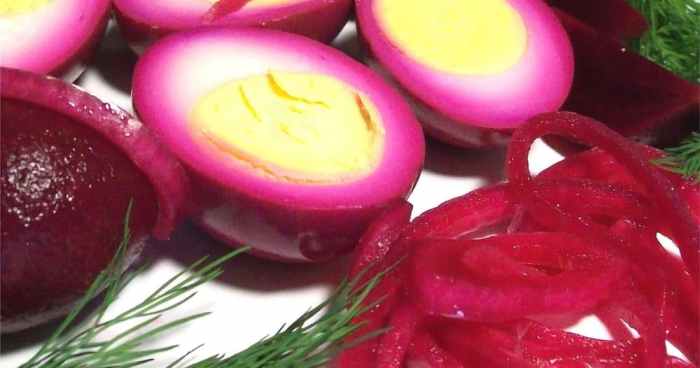
Pennsylvania Dutch Pickled Beets and Eggs: A Culinary Tradition
Pennsylvania Dutch pickled beets and eggs are a quintessential dish that embodies the rich culinary heritage of the region. This unique combination of sweet, tangy, and savory flavors has been a staple in Pennsylvania Dutch kitchens for generations, passed down through family recipes and cherished traditions.
The dish’s origins can be traced back to the early settlers of Pennsylvania, who brought with them their culinary traditions from Germany and Switzerland. The use of pickled beets, a common ingredient in European cuisine, and the inclusion of eggs, a versatile and readily available food source, solidified the dish’s place in Pennsylvania Dutch foodways.
Over time, the recipe has evolved, with families adding their own personal touches and variations, creating a diverse tapestry of flavors.
The preparation of Pennsylvania Dutch pickled beets and eggs is a testament to the ingenuity and resourcefulness of the Pennsylvania Dutch people. The process involves carefully pickling beets using a combination of vinegar, sugar, and spices, creating a vibrant and tangy base.
The eggs are then cooked to perfection, often boiled or poached, and served alongside the pickled beets. The contrasting textures and flavors of the beets and eggs create a harmonious culinary experience that is both satisfying and memorable. The dish is often enjoyed as a side dish or a light meal, and it is a popular choice for picnics, potlucks, and family gatherings.
History of Pennsylvania Dutch Pickled Beets and Eggs

Pennsylvania Dutch pickled beets and eggs, a unique and flavorful dish, are deeply rooted in the culinary traditions of the Pennsylvania Dutch region. This dish reflects the resourcefulness and ingenuity of the Pennsylvania Dutch people, who utilized readily available ingredients to create hearty and satisfying meals.
Origins and Connection to Pennsylvania Dutch Cuisine
The Pennsylvania Dutch, a cultural group of German-speaking immigrants who settled in Pennsylvania in the 18th century, brought with them their culinary traditions, which evolved and adapted to the local environment and resources. Pickled beets and eggs were staples in their cuisine, reflecting the availability of these ingredients in the region.
Pennsylvania Dutch pickled beets and eggs are a delightful contrast of sweet and tangy, a perfect side dish for a hearty meal. While the pickled beets add a burst of vibrant color and flavor, the creamy, soft-boiled eggs provide a comforting touch.
For a lighter dessert, I often turn to chef Johns classic strawberry shortcake , a refreshing and decadent treat that perfectly balances the savory flavors of the Pennsylvania Dutch dish. It’s a culinary journey that takes me from the heart of Pennsylvania to the sweetness of summer.
Beets were readily grown in the fertile soil of Pennsylvania, while eggs were a common source of protein from the poultry raised on farms.
Historical Context of Ingredients, Pennsylvania dutch pickled beets and eggs
Beets, a versatile root vegetable, were a popular food source for the Pennsylvania Dutch. They were commonly used in soups, stews, and salads. Pickling beets was a way to preserve them for consumption throughout the year. Eggs, another readily available ingredient, were used in various dishes, including breakfast, lunch, and dinner.
The use of eggs in pickled beet dishes is likely a reflection of the Pennsylvania Dutch tradition of using eggs as a binding agent in many dishes.
Evolution and Variations
The recipe for Pennsylvania Dutch pickled beets and eggs has evolved over time, with variations emerging based on regional preferences and family traditions. Some variations include adding vinegar, sugar, spices, or even other vegetables to the pickling brine. The addition of eggs to the dish may have evolved from the practice of using eggs as a binder in other pickled vegetable dishes.
The dish’s popularity has continued to grow, with many modern-day Pennsylvania Dutch cooks preserving the tradition of making pickled beets and eggs, while also incorporating their own unique twists.
Ingredients and Preparation Methods
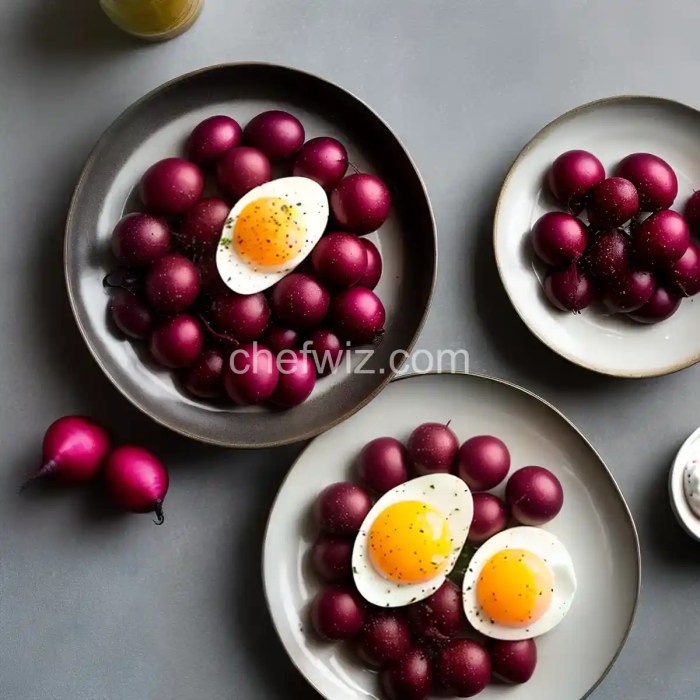
Pennsylvania Dutch pickled beets and eggs are a flavorful and traditional dish that has been enjoyed for generations. This unique combination of sweet and tangy flavors, with a hint of spice, is a testament to the ingenuity of Pennsylvania Dutch cuisine.
Ingredients
The essential ingredients for this dish are simple and readily available. Here is a list of what you’ll need:
- Beets: Fresh beets are preferred for the best flavor and color, but canned beets can also be used. Choose beets that are firm and free of blemishes.
- Eggs: Hard-boiled eggs add a protein-rich element to the dish and complement the beets’ sweetness.
- Vinegar: White vinegar is the most common choice for pickling beets, as it creates a bright and crisp flavor. Apple cider vinegar can also be used for a milder, more nuanced taste.
- Sugar: Granulated sugar is used to balance the vinegar’s acidity and create a sweet and tangy flavor profile.
- Spices: Traditional spices like black peppercorns, cloves, and allspice add warmth and complexity to the pickling brine.
- Salt: Salt is essential for preserving the beets and enhancing the overall flavor.
Preparation Methods
The preparation of Pennsylvania Dutch pickled beets and eggs involves several steps:
- Preparing the beets: Wash and trim the beets, then boil them until tender. Depending on the size of the beets, this can take anywhere from 30 to 60 minutes. Once cooked, peel the beets and slice them into thin rounds.
- Making the pickling brine: In a saucepan, combine vinegar, sugar, spices, and salt. Bring the mixture to a boil, stirring until the sugar dissolves. Allow the brine to cool slightly before adding the beets.
- Pickling the beets: Place the sliced beets in a clean jar or container, then pour the cooled pickling brine over them. Ensure the beets are completely submerged in the brine.
- Adding the eggs: Once the beets have cooled completely, add the hard-boiled eggs to the jar. This allows the eggs to absorb the flavors of the pickling brine.
- Storing and serving: Refrigerate the pickled beets and eggs for at least 24 hours, allowing the flavors to meld. The dish can be stored in the refrigerator for up to a week. Serve the pickled beets and eggs cold, as a side dish or a light lunch.
Importance of Specific Ingredients
Each ingredient plays a crucial role in creating the unique flavor profile of Pennsylvania Dutch pickled beets and eggs.
- Vinegar: The vinegar provides the tangy and acidic base of the pickling brine, creating a contrast to the sweetness of the beets and sugar.
- Sugar: The sugar balances the vinegar’s acidity, creating a harmonious blend of sweet and sour flavors.
- Spices: The spices, such as black peppercorns, cloves, and allspice, add warmth and complexity to the pickling brine, creating a depth of flavor that enhances the overall taste.
Cultural Significance and Traditions
Pennsylvania Dutch pickled beets and eggs, a vibrant and tangy dish, hold a special place in the culinary heritage of the Pennsylvania Dutch community. This traditional food transcends its simple ingredients and preparation to become a symbol of cultural identity, community gatherings, and cherished family recipes.
Role in Cultural Events and Celebrations
Pennsylvania Dutch pickled beets and eggs are frequently featured at various cultural events and celebrations, reflecting their deep connection to the community’s traditions.
- Church Suppers and Potlucks:This dish is a staple at church suppers and potlucks, where it is often served alongside other Pennsylvania Dutch specialties, creating a festive atmosphere and bringing people together.
- Family Reunions and Gatherings:Family reunions and gatherings are often an occasion to showcase this dish, as it evokes memories of shared meals and family traditions, strengthening bonds and fostering a sense of community.
- Community Festivals and Events:Pennsylvania Dutch pickled beets and eggs are often featured at local festivals and events celebrating the region’s heritage, showcasing the community’s culinary traditions and attracting visitors who are curious to experience the unique flavors of the Pennsylvania Dutch cuisine.
Associated Traditions and Customs
The preparation and consumption of Pennsylvania Dutch pickled beets and eggs are often accompanied by specific traditions and customs that contribute to the dish’s cultural significance.
- Passing Down Recipes:Recipes for pickled beets and eggs are often passed down through generations within families, ensuring the dish’s continued presence in the community’s culinary landscape. This tradition fosters a sense of connection to the past and preserves the authenticity of the dish.
- Preparation Rituals:Some families have specific rituals associated with the preparation of this dish, such as using a particular recipe handed down from ancestors or using specific ingredients sourced locally. These rituals add a personal touch to the preparation and contribute to the dish’s cultural significance.
- Sharing and Hospitality:The act of sharing Pennsylvania Dutch pickled beets and eggs is a gesture of hospitality and generosity within the community. This tradition reflects the importance of community and the value placed on sharing meals with others.
Place Within Pennsylvania Dutch Foodways
Pennsylvania Dutch pickled beets and eggs hold a significant place within the larger context of Pennsylvania Dutch foodways.
- Simplicity and Resourcefulness:This dish embodies the principles of simplicity and resourcefulness that are characteristic of Pennsylvania Dutch cuisine. The use of readily available ingredients and the focus on preserving and utilizing food are key elements of the community’s culinary philosophy.
- Preservation and Seasonality:The dish reflects the Pennsylvania Dutch tradition of preserving food for the winter months, using techniques like pickling to extend the availability of fresh produce. This tradition highlights the importance of seasonality and the ability to make the most of available resources.
- Community and Shared Traditions:Pennsylvania Dutch pickled beets and eggs are a testament to the importance of community and shared traditions within the Pennsylvania Dutch culture. The dish serves as a reminder of the collective culinary heritage and the importance of preserving and celebrating these traditions.
Pennsylvania Dutch pickled beets and eggs are a classic, tangy treat that’s always a hit at potlucks. The vibrant color of the beets adds a pop of visual interest to any table, and the sweet-and-sour flavor is a delicious contrast to the creamy richness of the eggs.
While I love the traditional recipe, I recently discovered a new way to elevate this dish: adding a few crispy bites of bacon wrapped water chestnuts iii to the mix. The salty, smoky bacon adds a surprising depth of flavor, and the crunchy water chestnuts provide a delightful textural element.
I’m eager to experiment with other variations, but for now, I’m happy to savor the simple pleasures of this Pennsylvania Dutch classic.
Variations and Modern Interpretations
Pennsylvania Dutch pickled beets and eggs, a beloved staple in the region, have evolved over time, reflecting both regional preferences and modern culinary trends. This classic dish has been reinterpreted to incorporate contemporary flavors and presentation styles, making it a versatile and adaptable option for modern palates.
Pennsylvania Dutch pickled beets and eggs are a classic comfort food, a tangy and satisfying side dish that always brings back memories of family gatherings. While the beets and eggs are a savory treat, a touch of sweetness can be the perfect complement.
A slice of German rhubarb meringue cake would be a delightful pairing, offering a contrast of textures and flavors. The tart rhubarb and fluffy meringue provide a light and refreshing counterpoint to the earthy richness of the pickled beets and eggs, creating a harmonious balance on the palate.
Regional Variations
Regional variations in Pennsylvania Dutch pickled beets and eggs reflect the diverse culinary traditions and local ingredients available in different areas. For instance, some regions might use different types of vinegar, such as apple cider vinegar or white wine vinegar, resulting in subtle differences in the flavor profile.
The addition of spices like mustard seeds, cloves, or allspice can also vary based on local preferences.
Modern Interpretations
Modern chefs and home cooks have embraced the versatility of Pennsylvania Dutch pickled beets and eggs, creating innovative interpretations that showcase both traditional flavors and contemporary culinary techniques.
Flavor Combinations
- One popular variation involves adding fresh herbs, such as dill, parsley, or tarragon, to the pickling brine, lending a vibrant and aromatic touch to the dish.
- Another modern twist involves incorporating citrus fruits, such as orange or lemon zest, to the pickling mixture, adding a bright and tangy note to the beets.
- Some cooks experiment with different types of sweeteners, such as honey or maple syrup, to enhance the sweetness of the beets and create a more complex flavor profile.
Presentation Techniques
- Modern interpretations often feature a more refined presentation, showcasing the vibrant colors of the beets and eggs. This might involve arranging the beets and eggs artfully on a platter, garnishing with fresh herbs or edible flowers, or serving them in individual ramekins.
- The pickled beets and eggs can be incorporated into salads, sandwiches, or even used as a topping for grilled meats or fish, creating a visually appealing and flavorful contrast.
Dietary Adaptations
Pennsylvania Dutch pickled beets and eggs have been adapted to meet contemporary dietary preferences, such as those seeking healthier or more plant-based options.
Reduced Sugar
- For those watching their sugar intake, the amount of sugar used in the pickling brine can be reduced or replaced with natural sweeteners like stevia or monk fruit.
- Alternatively, using a low-sugar vinegar or opting for a shorter pickling time can help reduce the overall sugar content of the dish.
Vegan Options
- To create a vegan version of the dish, the eggs can be omitted, and the pickled beets can be served alongside a plant-based protein, such as tofu or tempeh.
- The pickling brine can also be adapted to accommodate vegan preferences by using a vegan-friendly vinegar and omitting any animal-derived ingredients.
Culinary Benefits and Health Considerations
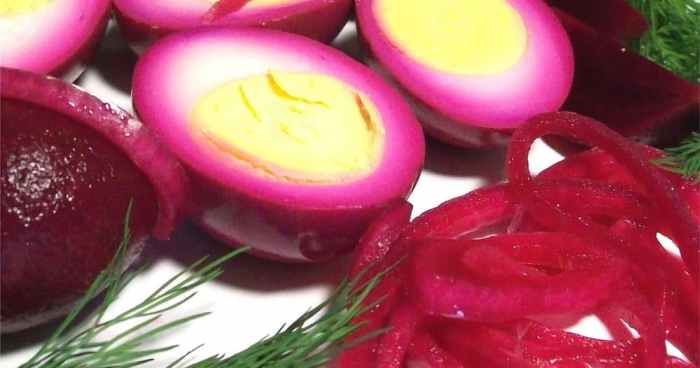
Pennsylvania Dutch Pickled Beets and Eggs, while a flavorful and traditional dish, offer a unique combination of ingredients that provide both culinary delights and potential health benefits. This section will explore the nutritional advantages of the dish’s components, highlighting potential health considerations and providing guidance on incorporating it into a balanced diet.
Nutritional Benefits
Pickled beets and eggs are both rich in nutrients, contributing to a healthy and balanced diet.
- Pickled Beets:Rich in dietary nitrates, which can help lower blood pressure and improve blood flow. They are also a good source of fiber, folate, potassium, and vitamin C. Beets are known for their vibrant color, which comes from betalains, powerful antioxidants that may have anti-inflammatory properties.
- Eggs:Eggs are a complete protein source, containing all nine essential amino acids. They are also a good source of choline, which is essential for brain health, and lutein and zeaxanthin, antioxidants that protect eye health.
Health Considerations
While generally safe for consumption, there are some health considerations to be mindful of when enjoying pickled beets and eggs.
- Sodium Content:Pickled beets are often high in sodium due to the pickling process. Individuals with high blood pressure or other sodium-sensitive conditions should consume them in moderation.
- Vinegar:The vinegar used in pickling can irritate the stomach lining for some individuals, especially those with acid reflux or gastritis.
- Allergies:While eggs are a common allergen, the risk of an allergic reaction is generally lower with cooked eggs. However, individuals with egg allergies should avoid this dish altogether.
Incorporating into a Balanced Diet
To enjoy the benefits of pickled beets and eggs while maintaining a balanced diet, consider these recommendations:
- Portion Control:Enjoy pickled beets and eggs as part of a balanced meal, ensuring portion sizes are appropriate for your individual needs.
- Variety:Incorporate a variety of other nutrient-rich foods into your diet, including fruits, vegetables, whole grains, and lean proteins.
- Moderation:Be mindful of the sodium content of pickled beets and consume them in moderation. Choose low-sodium pickled beets whenever possible.
- Hydration:Drink plenty of water throughout the day to help flush out excess sodium and maintain overall hydration.
Recipes and Cooking Tips
This section provides a recipe for traditional Pennsylvania Dutch pickled beets and eggs, along with tips for achieving the optimal flavor and texture. Additionally, it suggests pairings with other Pennsylvania Dutch culinary creations.
Traditional Pennsylvania Dutch Pickled Beets and Eggs Recipe
This recipe yields approximately 6 servings.
Ingredients:
- 2 pounds fresh beets, peeled and quartered
- 1 cup white vinegar
- 1 cup water
- 1/2 cup sugar
- 1 tablespoon salt
- 1 teaspoon black peppercorns
- 1 bay leaf
- 6 hard-boiled eggs, peeled
Instructions:
- In a large saucepan, combine the beets, vinegar, water, sugar, salt, peppercorns, and bay leaf.
- Bring the mixture to a boil over medium heat, then reduce heat to low and simmer for 30-45 minutes, or until the beets are tender.
- Remove the beets from the saucepan and set aside to cool.
- Once the beets are cool enough to handle, slice them into thin rounds.
- Arrange the sliced beets and hard-boiled eggs in a jar or container.
- Pour the remaining beet brine over the beets and eggs, ensuring they are fully submerged.
- Refrigerate for at least 24 hours before serving.
Tips for Optimal Flavor and Texture
- For a sweeter pickled beet, increase the amount of sugar in the brine.
- For a more tangy pickled beet, reduce the amount of sugar in the brine.
- To achieve a crispier texture, cook the beets for a shorter period of time.
- To achieve a softer texture, cook the beets for a longer period of time.
- To enhance the flavor of the brine, add additional spices such as allspice, cloves, or mustard seeds.
Pairing Suggestions
Pennsylvania Dutch pickled beets and eggs can be paired with a variety of other Pennsylvania Dutch culinary creations. Here are some suggestions:
- Potato salad: The tangy flavor of the pickled beets complements the creamy potato salad.
- Sauerbraten: The pickled beets provide a contrasting sweetness to the rich and savory sauerbraten.
- Schnitz un Knepp: The pickled beets add a bright and refreshing element to the hearty schnitz un knepp.
- Shoofly pie: The pickled beets offer a savory counterpoint to the sweet and sticky shoofly pie.

